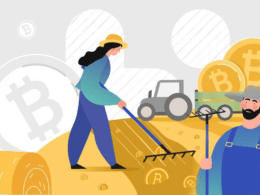Bitcoin is the flagship cryptocurrency taking the world by storm. It is the most valuable cryptocurrency attracting interest from both retail and institutional investors. However, it has taken investors through a wild ride, spiking to record highs and crashing afterward.
What is Bitcoin?
Bitcoin is a form of digital cash that does away with intermediaries and records all transactions on the ledger dubbed blockchain. Before Bitcoin came into existence, there were other digital cash technologies. Ecash is a project spearheaded by David Chaum and Stefan Brands.
Bitcoin roots date back to 2008 when the first domain bitcoin.org for the flagship cryptocurrency, was registered. Two months later, on 31 October 2008, to be specific, Satoshi Nakamoto, the brainchild behind the coin, authored a white paper dubbed ”Bitcoin: A peer-to-peer Electronic Cash System.” The identity of Nakamoto is still unknown to this date.
The game-changing paper brought about a new way of using the peer-to-peer network for electronic transactions that did not rely on third parties. Early 2009, the bitcoin network came into existence with the pioneer Nakamoto mining the first block on the Bitcoin blockchain. The genesis block of bitcoin had a reward of 50 BTC coins.
Hal Finney is attributed as the first supporter and adopter of Bitcoin. He is believed to have downloaded the bitcoin software the day after which it was released. He received ten bitcoins from the proprietor in what came to be known as the first Bitcoin transaction.
During the initial days, Nakamoto is believed to have mined about 1 million Bitcoins before disappearing. The development reins of the flagship cryptocurrency were handed to Gavin Andresen, who became the leader and developer of the blockchain project.
How Bitcoin works
Bitcoin is virtual cash. Unlike normal currency that can be touched, Bitcoin implies software or a digital phenomenon based on protocols and processes. It is a network of computers referred to as nodes that run a protocol on the blockchain in its simplest form.
It is built on top of a distributed ledger called blockchain, made up of units called blocks. The blocks contain information on every transaction that takes place on the network. Each block details the date, time, and total value of each transaction that takes place. The recording aspect makes it possible to trace the history of Bitcoins, thus preventing people from spending what they do not own.
Entries into a block are crammed together in chronological order. Individual blocks are then interconnected, resulting in a digital chain of blocks often referred to as the blockchain. Once a block is added to the blockchain, anyone can access it as it acts as a public ledger of transactions that took place at a given time.
Additionally, the blockchain is decentralized and cannot be controlled by anyone, and no one owns it. While anyone can edit a block on the blockchain, the process is not as straightforward as many people would like to think. The complexity that goes into editing details in a block is what makes Bitcoin trustworthy and secure.
A transaction can only be added into block one blockchain upon verification by other members. If the majority agrees, then an edit can be carried out. Unique codes are used to identify Bitcoin holders that verify a block. The codes are long random numbers that are difficult to produce, thus reducing people’s random guessing.
In addition, Bitcoin is extremely secure. Given that each transaction is recorded on a public ledger, it is nearly impossible to copy bitcoins, let alone fake or spend that one does not have. However, it is possible to lose one’s bitcoins by losing the login key to a Bitcoin wallet.
What is Bitcoin mining?
Mining is the process by which a new transaction is added to the Bitcoin blockchain. The mining process is carried out through a concept referred to as Proof of Work. In these cases, people deploy powerful computers to solve complex mathematical puzzles.
Every correct answer to a given puzzle entitles one to a set of Bitcoins as the reward. The reward comes in the form of new Bitcoin coins, resulting in new transactions on the blockchain.
While it was easy to solve the mathematical puzzles in the early days and get rewarded in Bitcoins, things have changed significantly. Solving the puzzles has become more challenging and complicated over time. Likewise, nowadays, people require powerful computers that consume a significant amount of electricity to mine Bitcoin.
Additionally, the rewards for correct answers to the puzzle have declined significantly. Therefore it’s become increasingly difficult to recoup the investment used to set up a successful mining operation with the rewards gotten from mining alone.
Why is Bitcoin valuable
Bitcoin is becoming extremely valuable by the day, given its limited supply. As it stands, the total supply is capped at 21 million, which is the total amount of Bitcoins that miners will ever mine or will ever be in circulation.
Likewise, with accelerated mining in recent years, the supply has diminished amid heightened demand. The high demand for Bitcoin is one reason why it’s one of the most valuable in the industry.
Additional Bitcoin accrues its value, given that it can be used as a legal tender. People are increasingly using digital currency to pay for goods and services worldwide. It’s become a preferred means of payment for some people, given that all transactions are anonymous and no one can track them.
The cryptocurrency is also attracting significant interest from institutions and big investors, which have helped drive its value. Investments from Tesla and Square have only gone to affirm Bitcoin’s credibility, sending its value up.







